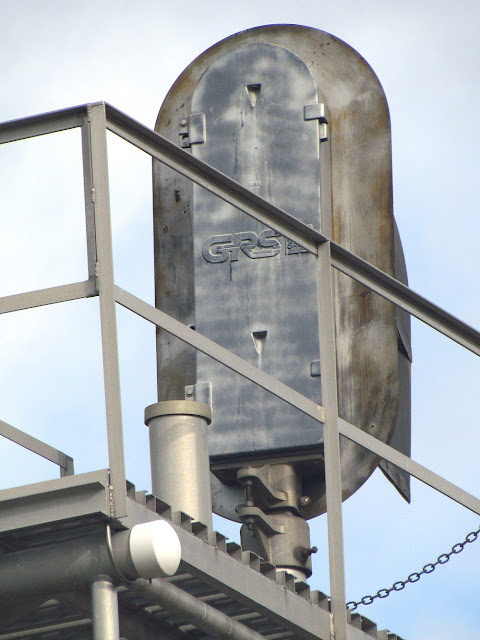Like the other major North American railroad signaling supplier, General Railway Signaling of Rochester, NY went through a number of corporate ownership changes over the years, eventually becoming part of Alstom in 1998. Unlike the other brand, GRS actually made an effort to update is corporate branding over the years and in many cases the logo was cast into the metal housings of its products.
The classic GRS logo was born in the early 20th century and was consisted of a script monogram type inside a circle, similar in concept to General Electric's logo. Along with the plain text "General Railway Signal" that was used on signal housings, this served GRS well up until the 1970's.
At this point the script logo was decidedly old fashioned and was replaced by a sans serif boxy stylized monogram type. This would be used on documentation up to the Alstom buyout and switch machine castings up through about 2010.
After being purchased by the Sasib Railways Group of Italy in 1989, an updated logo appeared on its new mono-block color light signal that gave the "GRS" monogram some 90's style and included the Sasib logo as well.
After purchase by Alston, the Sasib bit was removed from the molds, but a ghost impression remained.
Ultimately, Alstom felt there was very little value left in the GRS brand and finally has the casting holds changed to read Alstom. However because switch parts are durable and able to be reconditioned, the older logos still show up on motors or reconditioned housings on "new" point machines.
While US&S's many parents have still found no reason to update their castings, there have been all sorts of off brand knockoffs of the venerable M3 point machine, but that is a story for another day.













